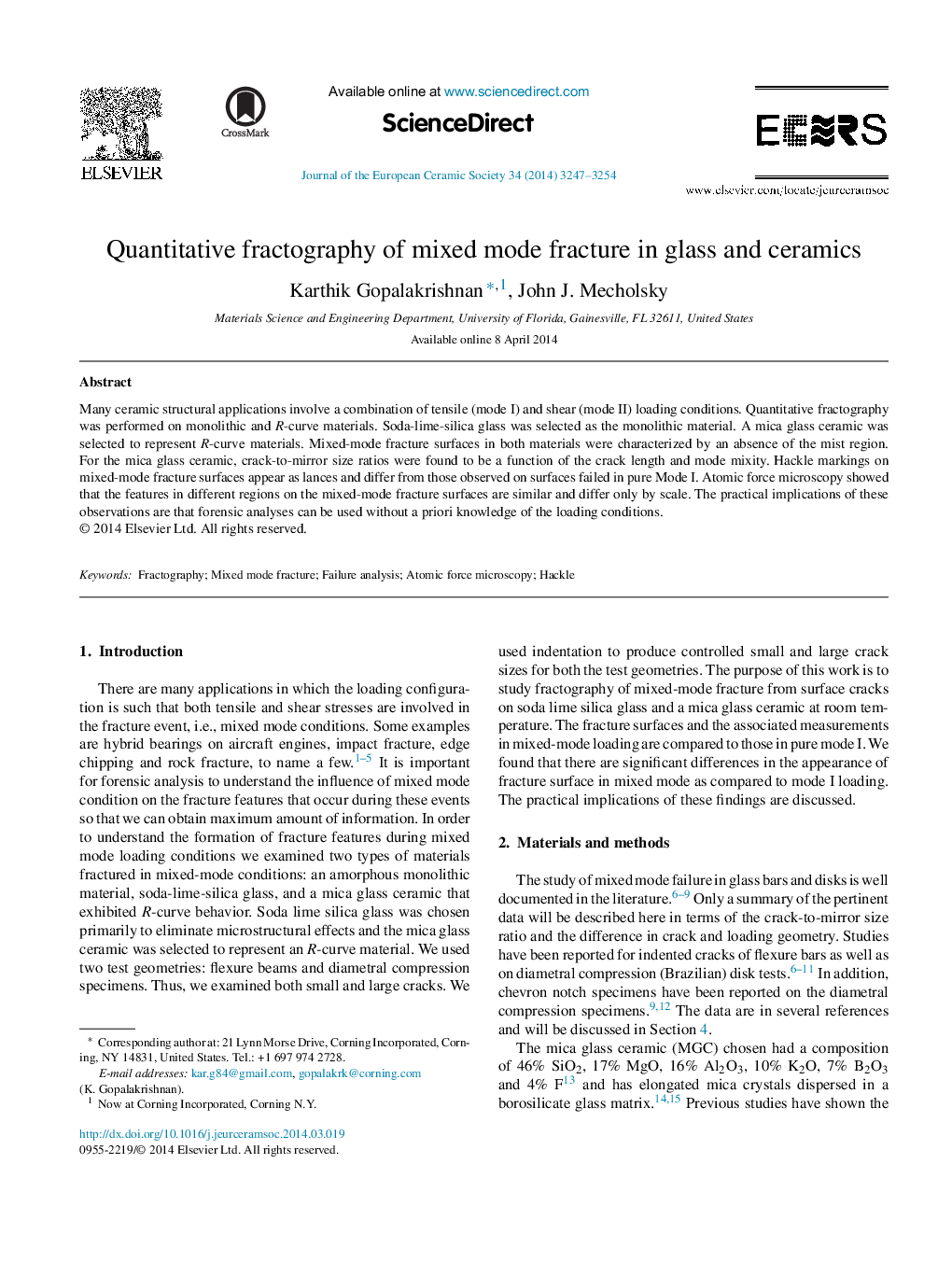| Article ID | Journal | Published Year | Pages | File Type |
|---|---|---|---|---|
| 1473670 | Journal of the European Ceramic Society | 2014 | 8 Pages |
Many ceramic structural applications involve a combination of tensile (mode I) and shear (mode II) loading conditions. Quantitative fractography was performed on monolithic and R-curve materials. Soda-lime-silica glass was selected as the monolithic material. A mica glass ceramic was selected to represent R-curve materials. Mixed-mode fracture surfaces in both materials were characterized by an absence of the mist region. For the mica glass ceramic, crack-to-mirror size ratios were found to be a function of the crack length and mode mixity. Hackle markings on mixed-mode fracture surfaces appear as lances and differ from those observed on surfaces failed in pure Mode I. Atomic force microscopy showed that the features in different regions on the mixed-mode fracture surfaces are similar and differ only by scale. The practical implications of these observations are that forensic analyses can be used without a priori knowledge of the loading conditions.
